Dasht-e Naz Wildlife Refuge: Nature's Paradise
Are you tired of the same old tourist destinations? Do you long for a vacation that enlightens and educates you, while immersing you in the wonders of nature?
Look no further than Dasht-e Naz Wildlife Refuge, a captivating animal sanctuary located just 29 kilometers north of Sari in Mazandaran province.
Dasht-e Naz Wildlife Refuge boasts one of Iran's most unique natural ecosystems.
It is adorned with breathtaking Hyrcanian forests, serving as a sanctuary for a diverse array of wildlife.
With over 447 plant species thriving within its boundaries, Dasht-e Naz Wildlife Refuge provides a safe haven for numerous animal species, including the iconic Iranian yellow deer. Stay with us to learn more about this wonderful natural attraction in Iran.
Dasht-e Naz Wildlife Refuge History
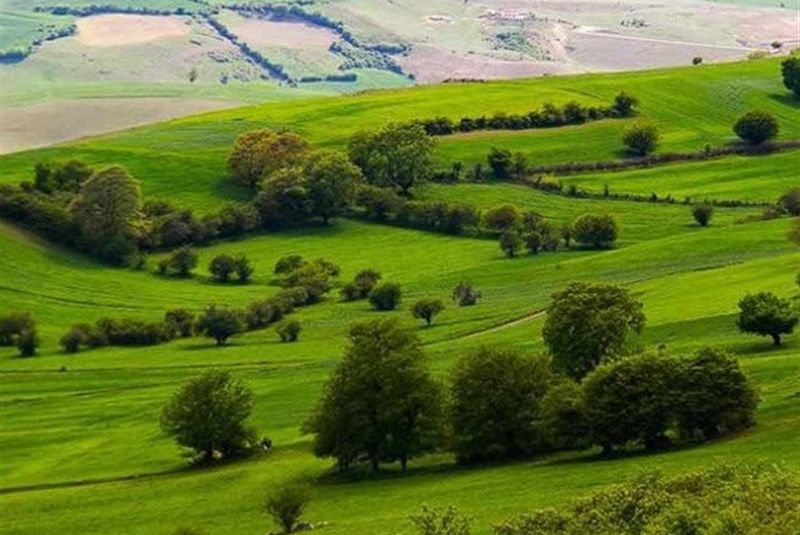
Dasht-e Naz Wildlife Refuge in Sari, with an area of about 56 hectares, is considered one of the tourist attractions of Mazandaran and is accessible from the northeast of Sari city.
The area of Dasht-e Naz Wildlife Refuge was part of the properties of Reza Shah during the Pahlavi era. After his death, Mohammad Reza Pahlavi developed this area, and the history of the establishment of Dasht-e Naz Wildlife Refuge and Airport dates back to that period.
Dasht-e Naz Wildlife Refuge in Sari has been registered as a protected area since 1967 and has been registered as a wildlife sanctuary since 1975.
Features of Dasht-e Naz Wildlife Refuge
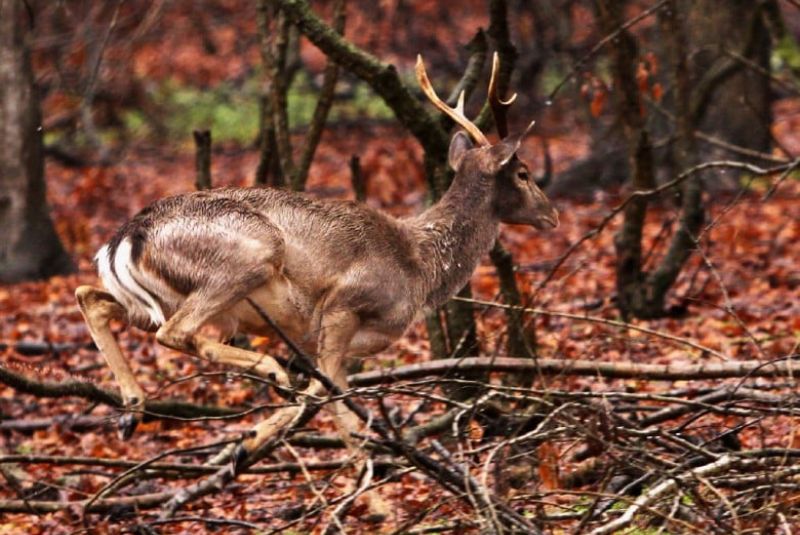
Dasht-e Naz Wildlife Refuge in the city of Sari has a unique and natural ecosystem, covered with Hyrcanian forests. It has more than 447 species of plants, which is a prominent indication of the unique and natural nature of the region's ecosystem.
The most important plant species that grow in Dasht-e Naz Wildlife Refuge include Oak, Touska, Maple, Lilac, and Angelica with predominant species being free-standing trees and oaks.
Dasht-e Naz in Sari is a significant part of the Hyrcanian forests; natural forests with a history dating back thousands of years and considered the second-largest natural phenomenon in Iran after the Lut Desert, which is listed as a UNESCO World Heritage Site.
53% of the country's total forests are in Mazandaran province, and out of the 12 registered Hyrcanian sites in Iran, 6 sites are located among the forests of this province.
Dasht e Naz Wildlife Refuge Animals
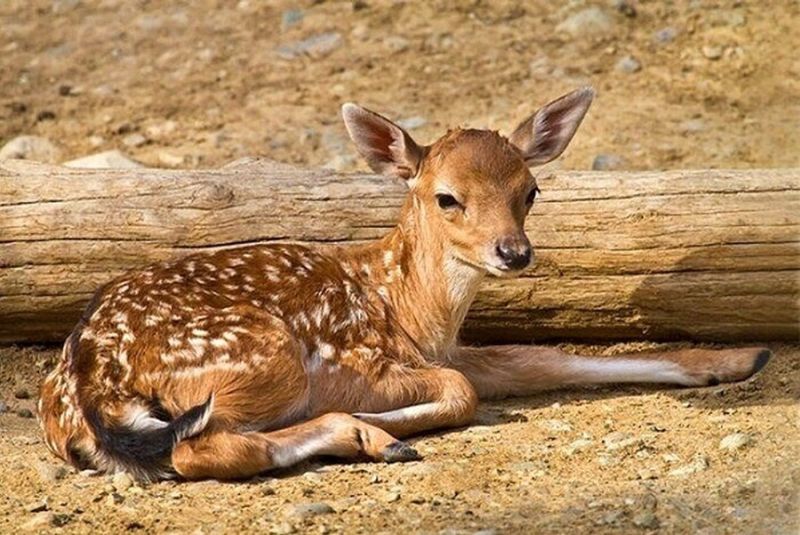
The Dasht-e Naz Wildlife Refuge, known for its diverse ecosystem, is home to a remarkable array of wildlife species including jungle cat, wild goat, wild boar, and hoopoe.
One of the most prominent Dasht e Naz wildlife refuge animals is the Iranian yellow deer, which has played a significant role in boosting the refuge's popularity. Efforts to preserve and increase the population of this endangered species have led to the establishment of Dasht-e Naz as Iran's first yellow deer breeding center, with newborn calves often being transferred to other centers across the country.
Scientifically known as "Dama dama mesopotamica" or "Persian Fallow Deer," the Iranian yellow deer showcases distinct characteristics. With a larger body compared to other native deer species like wild goats and wild boars, these deer exhibit a body length ranging from 120 to 200 centimeters, a height of 85 to 100 centimeters, and a weight of 45 to 130 kilograms. The antlers, measuring between 50 to 70 centimeters, serve as indicators of age and regenerate after shedding during winter.
The Iranian Yellow deer is distinguished by white spots on their back and sides. It undergoes changes in appearance throughout the year. In summer, their short yellow or orange-colored hair features more distinct spots, while in winter, their longer hair turns gray, and the spots become less pronounced.
Dasht-e Naz Wildlife Refuge also offers a haven for birdwatching enthusiasts. Visitors can observe European honey buzzards, long-tailed tits, wood pigeons, and steppe eagles, among other avian species. The refuge is particularly notable for its annual wood pigeon migration, providing a captivating spectacle for bird enthusiasts.
| Read more: Why Explore Iran's Ecotourism Wonders?
Threatening Factors of Dasht-e Naz Wildlife Refuge

Dasht-e Naz is very attractive and scenic for nature and wildlife enthusiasts, and tourists can enjoy watching yellow deer, hoopoes, and pigeons with permission from the Environmental Organization.
This attraction is under threat for various reasons. One of the most important factors in this threat is the increase in the yellow deer species, which itself poses a serious threat to the endemic species of the region.
Also, the pressure resulting from the maintenance and reproduction of yellow deer over more than five decades, as well as the destruction of forest cover and the lack of growth and replacement of new saplings, are the most important destructive factors affecting the Dasht-e Naz Wildlife Refuge.
It is worth mentioning that in the spring season, which is the mating season of yellow deer, in order to maintain tranquility and prevent unwanted stress and insecurity caused by the entry of visitors, efforts are made every year from early to late spring to minimize the presence of people in the area. The gestation period in yellow deer is about eight months, and they usually give birth to one calf, with an average lifespan of 16 years in captivity.
| Suggestion: Iran's Top 14 National Parks Every Tourist Should Visit
Dasht e Naz Wildlife Refuge Location
Dasht-e Naz Wildlife Refuge is located in Mazandaran Province. It is 29 kilometers (30 minutes) north of Sari city and 11.5 kilometers (20 minutes) from Sari International Airport. Dasht-e Naz Wildlife Refuge in Sari is located at a distance of 309 kilometers (four hours and 40 minutes) from Tehran.
How to Get to Dasht Naz Wildlife Refuge
You can choose to travel to Dasht-e Naz Wildlife Refuge in Sari from Tehran by air; because Sari International Airport is located 11.5 kilometers from this area. Sari International Airport is located in the "Shahriar Kandeh" area in the village of Islamabad, right where Dasht-e Naz Sari is located.
In addition to airplanes, you can also travel from Tehran to Sari by train. The Tehran to Sari train route is undoubtedly one of the most beautiful rail routes in the country, especially passing through Firuzkuh, you will enter a lush and untouched natural environment.
By train, it will take you about seven and a half hours to reach Sari. From Sari train station, you will have about 32 kilometers (36 minutes) distance ahead on the Farahabad and Panbeh Choloh road.
If you choose to use a personal car to go to Dasht-e Naz, it is enough to drive yourself from Tehran to Sari. To get to Sari, you can move towards Mazandaran via the Haraz road to Firuzkuh.
From the Haraz road to the city of Amol and then passing through the cities of Babol and Qaemshahr, you will reach Sari, and you will have direct access to Qaemshahr and then Sari via the Firuzkuh road.
From Sari, by traveling about 10 kilometers on the Sari to Goharbarran road towards Neka city, you will reach the Surk intersection. If you turn left at this intersection, you will reach a company called "Neka Wood".
By passing through this company and continuing on the road, you will reach the village of Islam Abad and the Shahriar Kandeh area, from where you can easily reach Dasht-e Naz Wildlife Refuge.
Address of Dasht-e Naz Wildlife Refuge: Mazandaran, Sari, Panbeh Choloh Road, Neka City, Islam Abad Village, Shahriar Kandeh, Dasht-e Naz Wildlife Refuge.
| Discover: Chalus Road - Iran's Most Beautiful Road
Best time to visit Dasht-e Naz
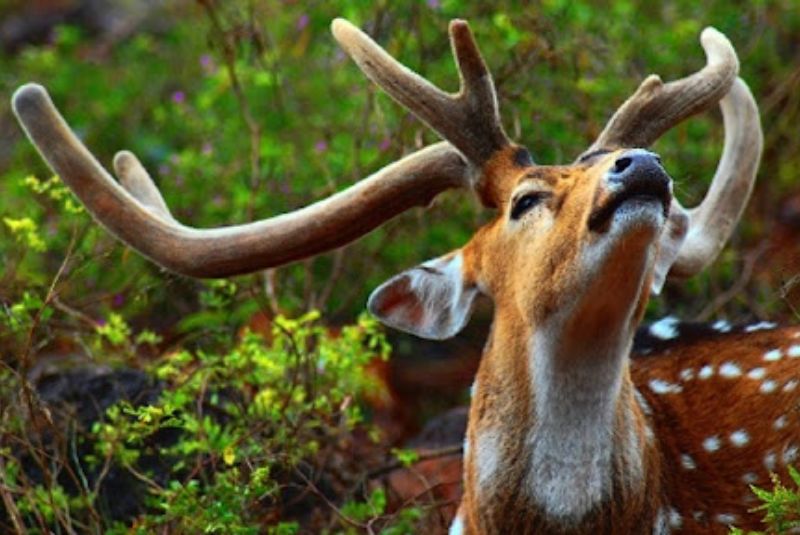
The average temperature in the hottest month of the year in Dasht-e Naz, is around 22 degrees Celsius, and the average temperature in the coldest month of the year is about 1.5 degrees Celsius.
This temperature range indicates a moderate and moist climate in the region. Dasht-e Naz usually receives rainfall throughout all seasons. Considering visitation restrictions during the mating season and the weather conditions of the area, the best time to visit is spring and summer.
Accommodation Near Dasht-e Naz Wildlife Refuge
There are various accommodations available around Dasht-e Naz wildlife refuge, offering a wide range of prices and amenities. You can choose from equipped hotels to eco-lodges and independent suites for your stay near this area.
Near Dasht-e Naz, Sari, there are hotels such as the four-star Salar Darreh Hotel (41 kilometers away), Narenj Hotel (23 kilometers away), Badle Hotel (three-star, 17 kilometers away), as well as apartment hotels like Ghorbani Hotel (26 kilometers away).
There are also eco-lodges like Galsh-e Manzel Sari (36 kilometers away), Mahjoon Lodge (51 kilometers away), and Nazari Forest Lodge (34 kilometers away), which can be good options for accommodation.
| Also read about: Arasbaran Forest - A Haven for Nature Lovers
Attractions Near Dasht-e Naz Wildlife Refuge
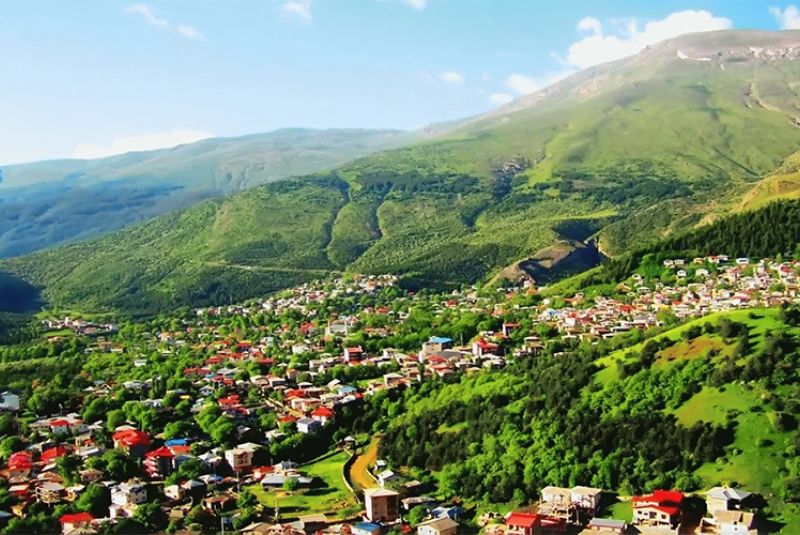
1. Historical Complex of Farah Abad
The historical complex of Farah Abad was once a bustling port for merchants and traders. Constructed during the reign of Shah Abbas Safavid between 1641 to 1646, it was initially a village named "Tahan."
Recognizing its strategic position for trade, Shah Abbas Safavid ordered the construction of various structures, including mosques, government buildings, caravanserais, bridges, markets, baths, and palaces.
Despite suffering damage during Russian attacks, remnants such as a portion of Shah Abbas's palace, the Abbasid bridge, and a Safavid-era bath house still stand. Registered as a national heritage site in 1976, the complex is located 24 kilometers (29 minutes) from Dasht-e Naz Sari.
2. Samaskan Wildlife Sanctuary
Located 10 kilometers southeast of Sari, the Samaskan Wildlife Sanctuary is one of Mazandaran Province's rare remaining plain forests. It is home to various plant species like oak, juniper, and wild almond, as well as rare animal species including Persian fallow deer, wild cat, yellow deer, and maral. Established as a protected area in 1973 and designated as a wildlife sanctuary in 1975, it attracts nature and environmental enthusiasts.
3. Kulbadi Historical House
Remaining from the Qajar period, Kulbadi Historical House is a notable attraction in Sari. With its inspired Qajar architecture, including both internal and external sections, this house boasts a charming tile-covered roof.
Registered as a national heritage site in 1998, it's open to visitors from 8 AM to 1 PM and is located 34 kilometers (40 minutes) from the Dasht-e Naz Wildlife Sanctuary.
4. Badab-e Surt
One of Sari's most famous natural attractions, Badab-e Surt features unique and unparalleled mineral springs. Recognized as Iran's second natural heritage site in 2008, after Mount Damavand, these colorful and beautiful springs are unlike any other in the world. Located in Sari, it's registered as the second saltwater spring in the world, after Turkey's Pamukkale.
5. Tower of Sultan Zain al-Abidin
This attraction is renowned for its architectural style, eight-faced pyramidal dome, and intricate tile work. Inscriptions in Nasta'liq script adorn the tiled surface, and a plaque at the entrance of the building adds to its historical significance. Be sure to visit this site after exploring the Dasht-e Naz Wildlife Sanctuary.
6. Vaziri Bathhouse
Another nearby attraction to Dasht-e Naz is the Vaziri Bathhouse, known for its architecture, materials, and building features, making it one of the notable and famous structures in Mazandaran. With an area of about 200 square meters, it includes all necessary spaces for a traditional bathhouse, making it a remarkable cultural site to visit.
Important points to consider when visiting Dasht-e Naz
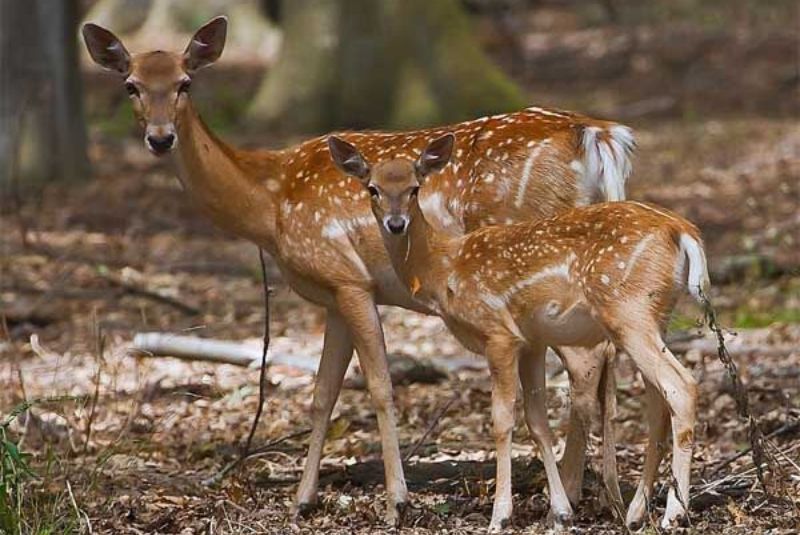
- Preserve and protect the natural forests: Dasht-e Naz Wildlife Refuge is considered a valuable and pristine heritage due to its location in the Hyrcanian forests. It has remained intact for thousands of years. As an environmentally conscious tourist, it is your responsibility to safeguard and care for these natural forests.
- Maintain silence: When exploring the beautiful environment and the sanctuary of rare animals, observe silence. Playing loud music can cause stress to different species and disturb their natural habitat.
- Avoid feeding the animals: Due to the vulnerability of species like the yellow deer that inhabit this habitat, refrain from giving any food to the animals. Feeding them can disrupt their natural behavior and pose risks to their well-being.
- Obtain the necessary permit: Keep in mind that you need to have a permit to enter Dasht-e Naz Wildlife Refuge. Make sure to acquire the required permission before visiting the sanctuary.
Bottom Line
Dasht-e Naz Wildlife Refuge in Sari, Iran, is a captivating natural attraction that showcases the region's rich biodiversity. Nestled amidst the picturesque landscapes and Hyrcanian forests, this mountainous refuge boasts a remarkable ecosystem, housing over 447 plant species.
The sanctuary, spanning 56 hectares, offers a unique opportunity for nature enthusiasts and wildlife lovers to explore and witness the beauty of the area. Visit Dasht-e Naz Wildlife Refuge and become a steward of nature's wonders.
Share your story!
Comment below and let us know about your Experience.
Your story inspires others!


Comment
Leave a Comment